Nepal, the country of imposing Himalayas, thick forests, historical heritage and sacred places, is a home to friendly and welcoming Nepalis, but also to kind-hearted Tibetan refugees who keep their traditions and culture alive. Intrigued by the Buddhist teachings and interested in mingling with the Tibetans, we longed for a spiritual and cultural experience that would enable us to understand better the lives of the Tibetans living outside of their home country and Tibetan monks, in particular.
Before coming to Nepal, we didn’t have any information about a place where we could find what we were looking for, but we somehow knew that the right occasion would come our way.
The first two sites we headed to after arriving to Kathmandu were Boudhanath, which is the most important place of worship for Tibetans living outside of Tibet, and Swayambunath, the second most important religious place in Nepal for the Tibetans after Boudhanath.
If you want to know more about these two impressive sites, have a look at our post about the 2 most sacred places in Kathmandu Valley.
One afternoon, after visiting Swayambhunath, we roamed the streets of the neighbourhood around this sacred place. In fact, there was nothing special to see or do except for stopping by at a small restaurant to eat momo, Tibetan dumplings filled with spinach or potatoes.
Walking through one of the busy streets near Swayambhunath, we suddenly heard sounds of drums and tubes. Drawn in, we started following the sound. Round the next corner, we found out that these alluring sounds were coming from a beautiful monastery where monks were just having a puja (a prayer).

We were greeted by an older Tibetan guard at the main gate, and were told we could enter the temple and join the puja. The next two hours, we were watching with astonishment 200 monks praying and playing on special instruments.
That day when we happened to find the beautifully colourful temple completely changed our stay in Nepal. Those following two weeks that we spent in the Tibetan monastery on the outskirts of Kathmandu turned to be the most outstanding cultural and spiritual experience of our lives – at least until that time.
We arrived just in time, two days before an important 10 day long celebration.
About 200 monks live in the monastery, fifty of them are still small children. All of them have come from Tibet after the Chinese invasion in 1959 to their beautiful and peaceful country. The Tibetan refugees have been making the exhausting month-long journey through the Himalayas until today. As the number of Chinese soldiers along the border has increased, the number of the Tibetans who decide to set on such a risky journey and who get to their destination has gone down rapidly in the last years.

The older Tibetan monks, who are also called lamas, came to Nepal through the Himalayas on their own. Younger lamas and the Tibetan children were sent by their parents separately, accompanied by an adult. Parents from different regions in Tibet sent their children to Nepal with the hope and faith that they would stay safe in monasteries there and get education, food and new home. There are a lot of Tibetan monasteries all over Nepal supported by the Buddhists from developed countries, mainly from Europe, America, Australia and Malaysia.

There were two monasteries, one big and a smaller one. We had seen a lot of temples but these monasteries were exceptionally beautiful. Some lamas spoke English so we could talk to them about their lives and our experiences. They told us that the celebration was held every few years and lasted ten days. We were so lucky to arrive just when the celebration started. They celebrated “bardo”, a Tibetan word for “in between”, the state in which souls stay when they leave a body (when the body dies) before entering another one (rebirth).
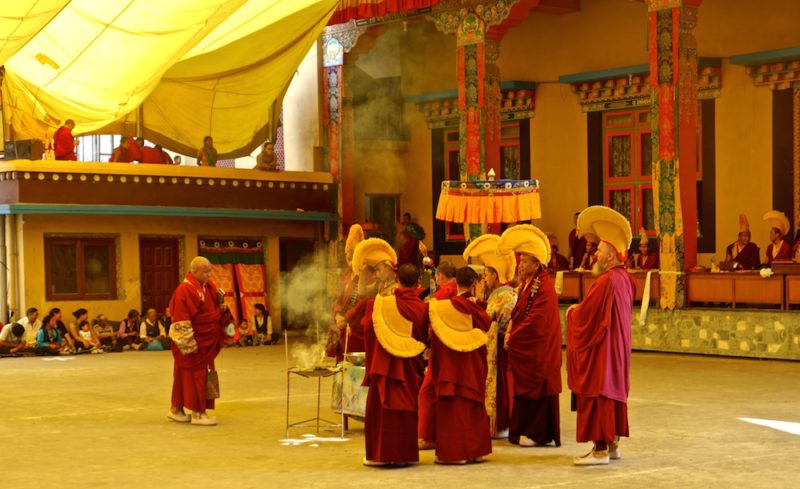
As it was the time of celebrations of bardo, all lamas were having special meditations inside the big monastery, with a break just for lunch. We were invited to join and watch. We must say that we had never experienced something so powerful.
Two of the lamas, mostly the very young ones, were singing a special song. The song was supposed to be sung 24 hours and lamas singing them changed every couple of hours. We learned the song and were often singing with them.
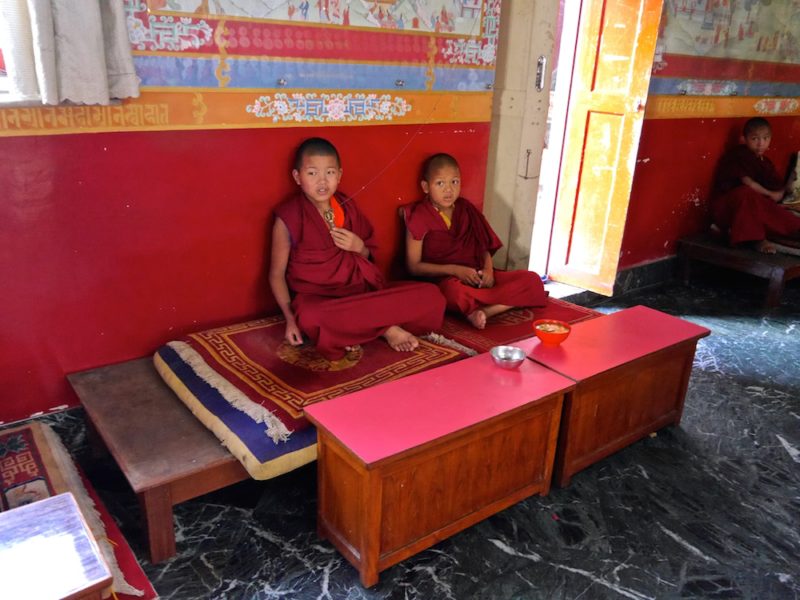
An important part of the celebration was a very slow dance with swords. Dancing lamas were wearing special hats, masks and costumes. Drums, long tubes and small metal instruments, a handbell and dorje intensified the spiritual moments. Some days ten lamas danced inside the temple and the last day around forty lamas danced outside.
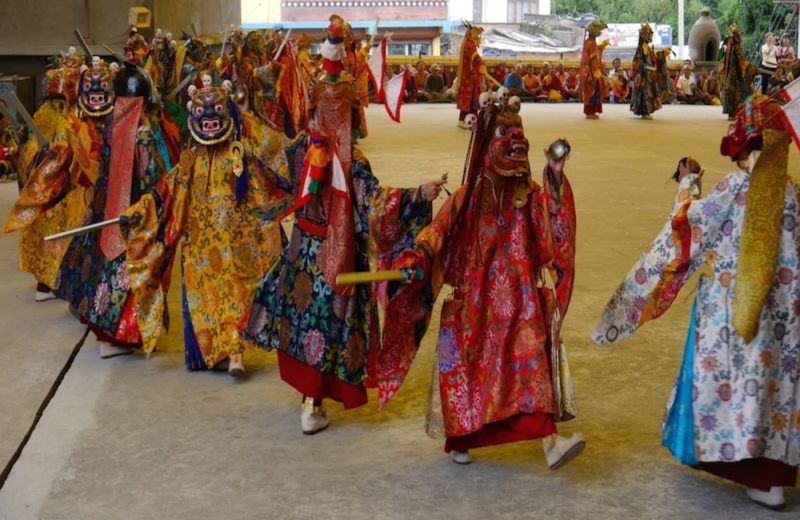

A lot of old Tibetan people living in Nepal joined the ceremonies and meditations, sitting in the smaller monastery and outside around the big monastery. We could see how deeply and strongly they were involved into their prayers, far from their home for a long time. They were very friendly. We shared fruits and cookies and smiled at each other during the breaks.
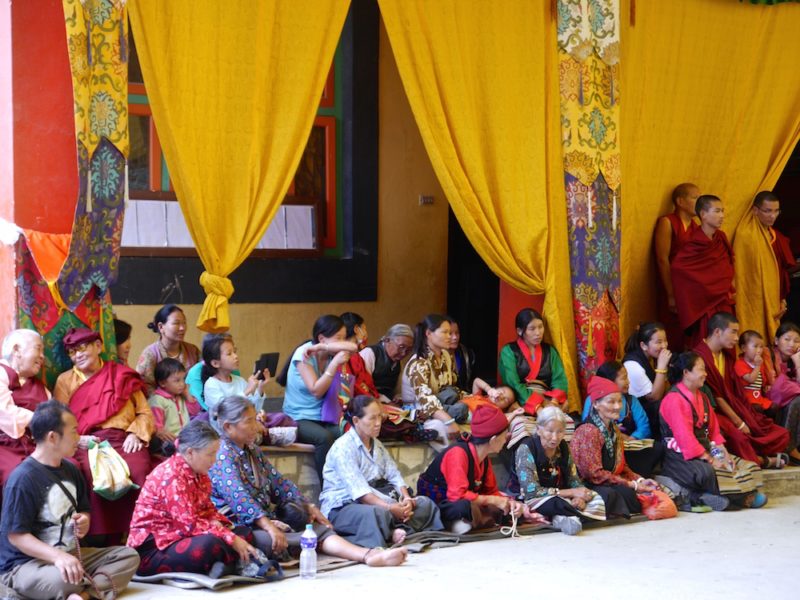
The lunch break was a beautiful time, we were all waiting in a long queue in the sun for lovely vegetarian meal – dhal, vegetables and rice, smiling and talking with lamas.

Sometimes it seemed to be too long for the little lamas, they were running around the monasteries or went outside of the monastery to buy some chocolates and sweets.
At the end of the celebration the lamas made a mandala from the ashes and later took it to a pond. We were allowed to go with them in a bus and accompany them to the mountains where they poured the ashes into the pond.

We met a young Tibetan woman Lobsang during the celebration. She could speak English and we immediately became friends. She was one of the very few younger Tibetans who came to watch the celebrations, and she told us all about her life experience.
In 2003, when she was nine, her parents sent her to India with another two children and a man who was leading them. They went through the Himalayas, walking in the night and sleeping in the day to avoid being spotted and captured. They were heading to Dharamsala, where His Holiness Dalai Lama has lived since he left Tibet after the Chinese invasion in 1959.
In Dharamsala, there are a lot of schools for children from Tibet supported by sponsors from foreign countries. The children can study, get accommodation and meals for free until they are 21.
She said she couldn’t remember much from the journey. She just remembered how tired and hungry she was. She said that she was quite happy among all the other kids from Tibet at school later. But when she finished the school and her friends, supported by sponsors, left for various foreign countries, she didn’t know what to do. Then she decided to go to Kathmandu in Nepal to stay with her grannie who has lived there after leaving Tibet. And that’s how we met. Her grannie lives nearby the monastery and they both joined the big celebration.
Lobsang misses her parents, the other grannie and her sister in Tibet. But she can’t go home. If she goes the Chinese will put her in prison and she would never see her parents again. We can’t express how sad we were hearing her true story.
It was a life changing experience to meet Lobsang and to be a part of all the celebrating community.
Once we asked an older lama what he thought of life and what was the most important to know to live a good life. He answered: “I am sometimes also confused.” And smiled.
So even after years of studying Buddhism and with thousands of meditations, lamas don’t know everything. Who knows? In the end it’s the best to live simply one day at a time, with open hearts, clear and positive minds, loving and helping each other, and mainly helping people who are in need.
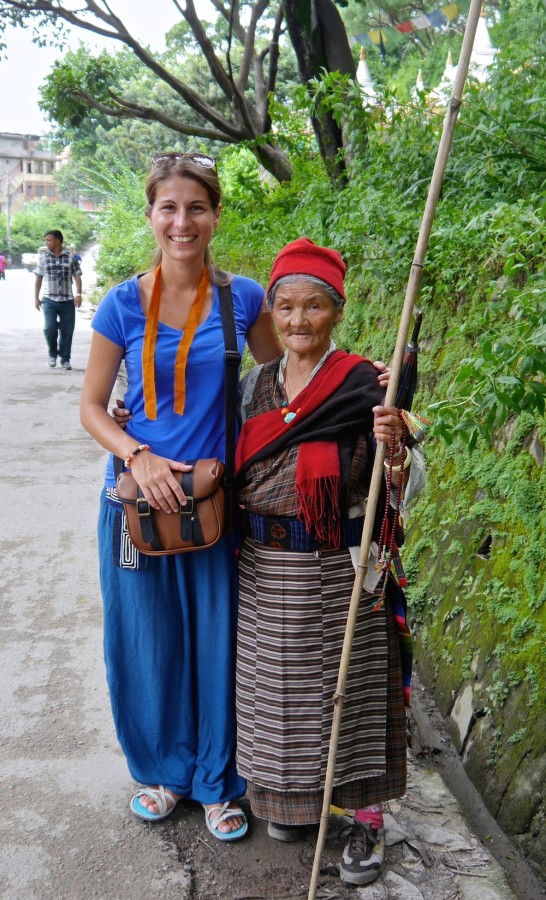
This beautiful monastery was damaged by the recent earthquake but we have heard since that all the lamas are safe in another monastery close to Kathmandu.
The two weeks we spent in this monastery in September 2014 have been some of the best weeks in our lives. We miss the people of Nepal a lot and one day we will definitely be back.
What has been the best cultural or spiritual experience on your travels so far?



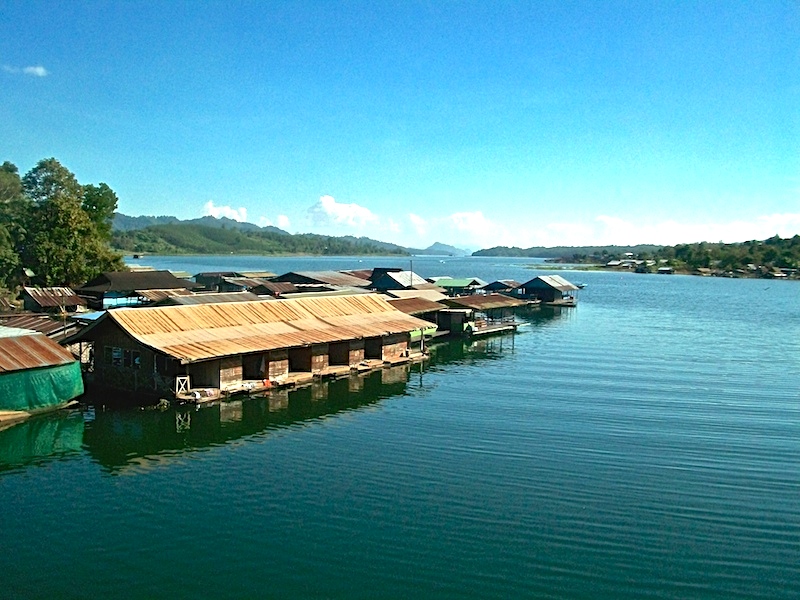
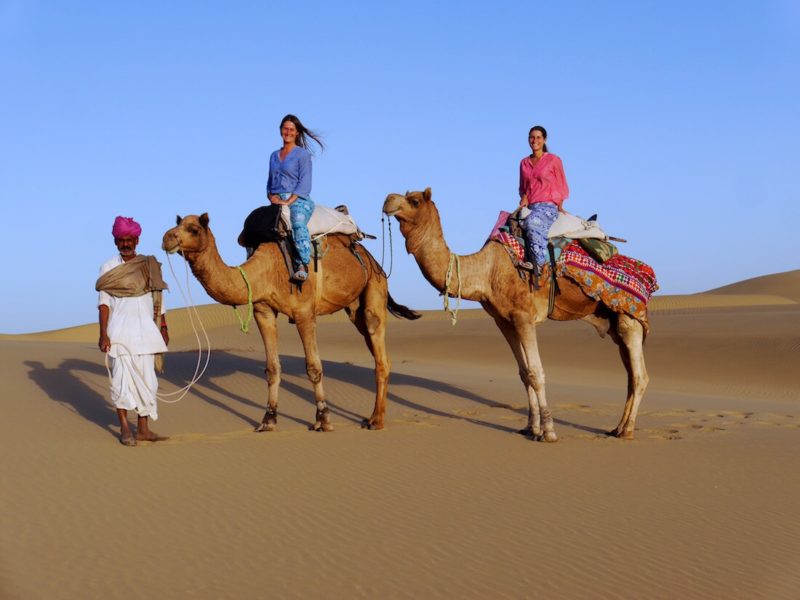
Matthias
wow – that must have been a great experience!! 🙂
Consuelo
I think I will love to do this trip with my daughter next year.
Simply Nomadic Life
ConsueloHi Consuelo! Sure, that sounds like a great idea! Nepal is a beautiful, interesting and safe country.
Safe travels,
Petra & Veru